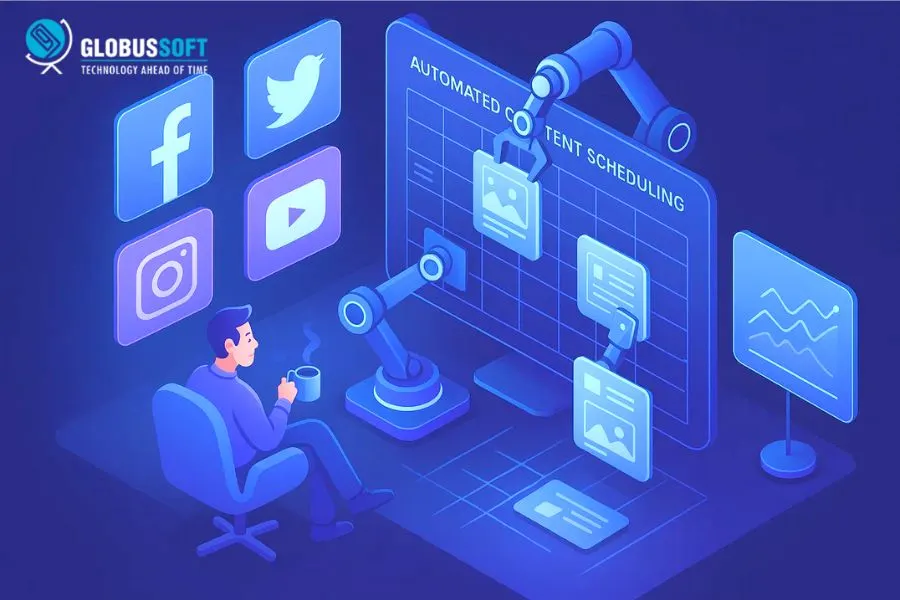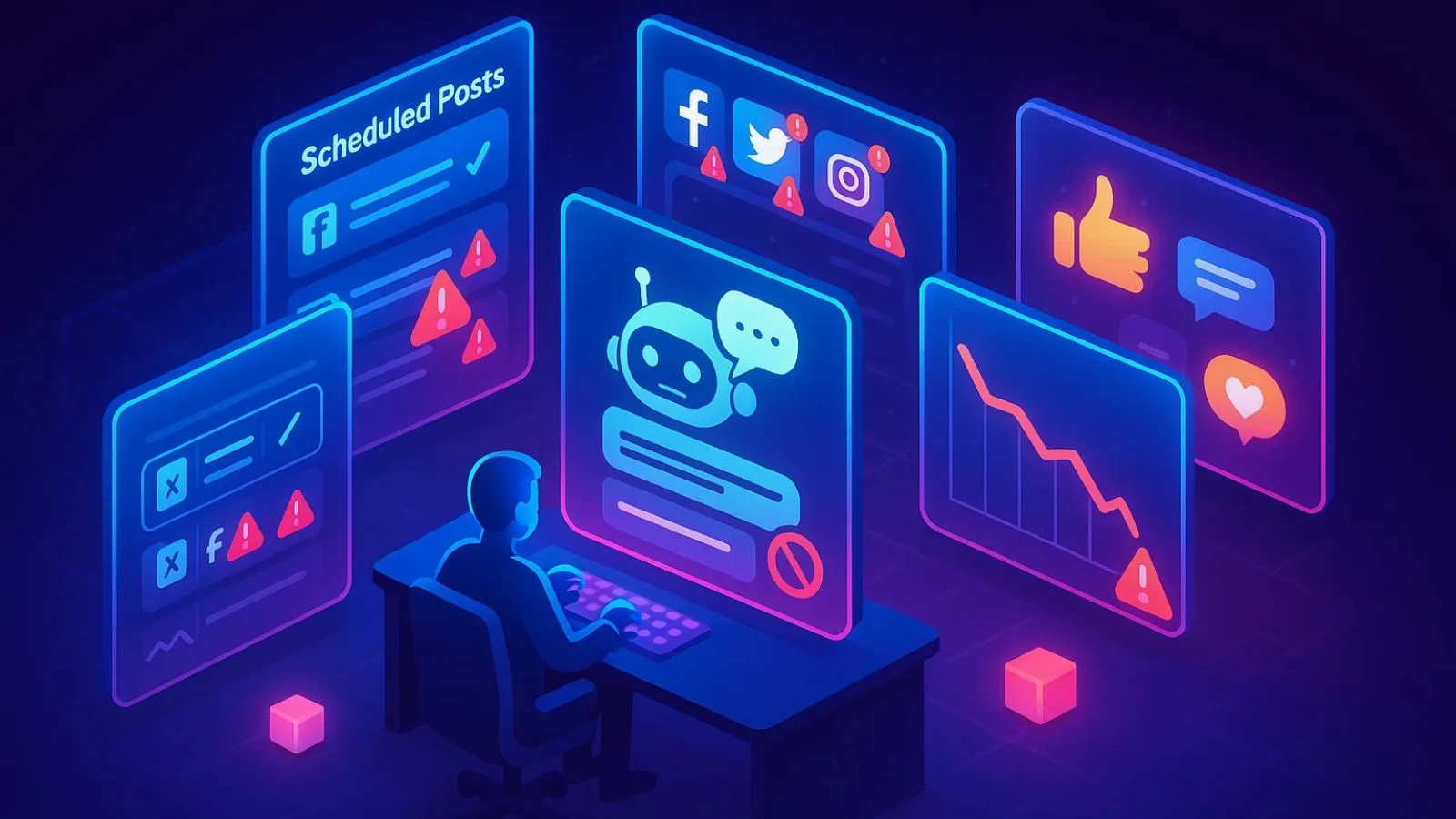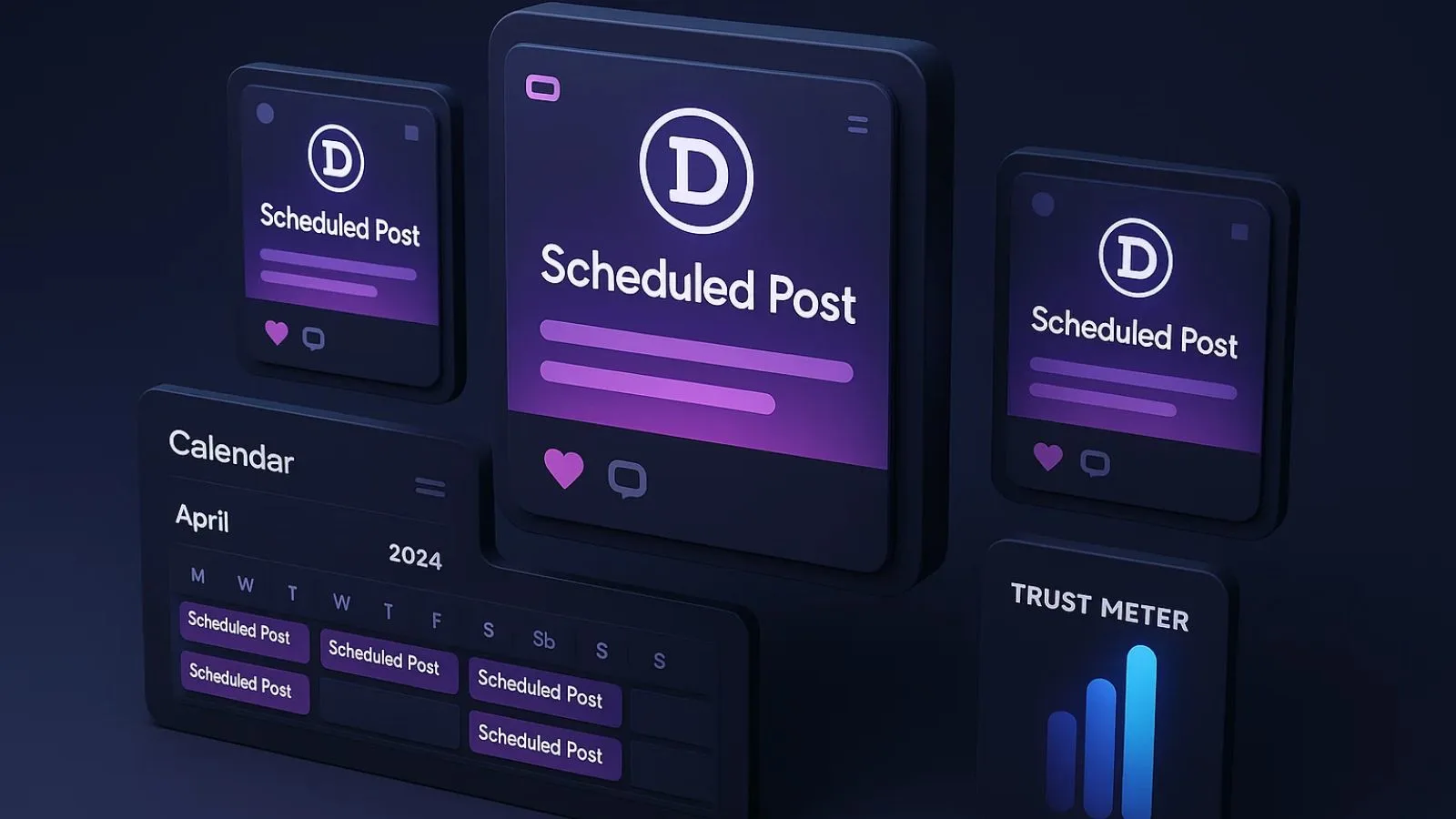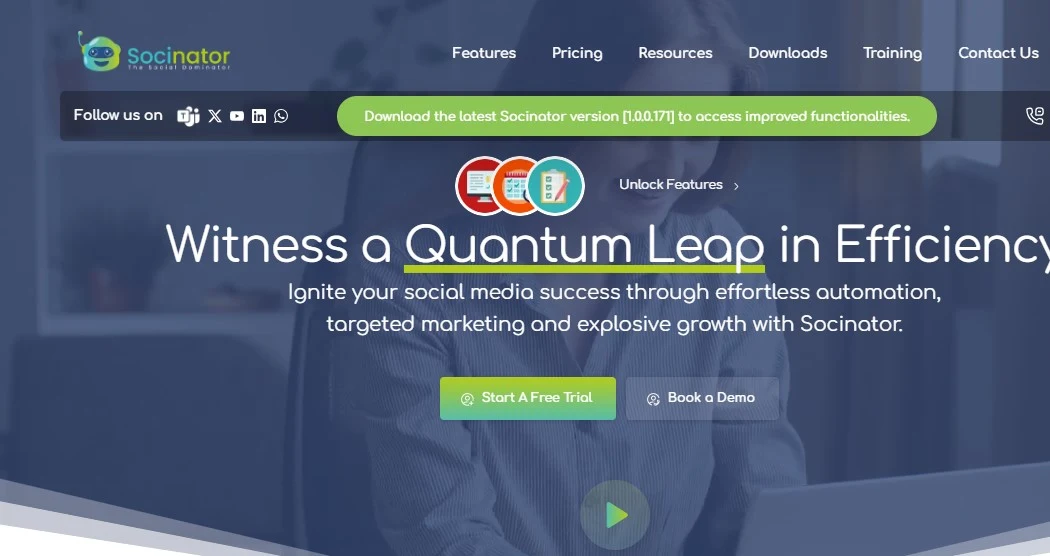
Managing a content strategy without automation can feel like running a marathon while juggling multiple tasks, but exhausting. Between brainstorming fresh ideas, creating content, and posting across multiple platforms, marketers often find themselves short on time and consistency. That’s where social media automation comes in.
By using smart tools and strategies, brands can schedule posts, track performance, and engage audiences without constantly being glued to their devices. This isn’t just about convenience; it’s about boosting efficiency, maintaining a strong online presence, and giving your content the attention it deserves.
In this blog, we’ll explore how automation can transform your content strategy from a daily hustle into a streamlined, results-driven process.
You can Also Listen to our Blog here,
What Is Social Media Automation?
At its core, social media automation is the process of using tools and technology to manage, schedule, and publish content across different platforms without having to manually post each update in real time. Instead of logging in to Facebook, Instagram, LinkedIn, and Twitter multiple times a day, you can plan everything and let automation handle the heavy lifting.
It’s not just about automated posting, though. With the right setup, automation can also help you monitor engagement, track analytics, and even respond to basic inquiries. This approach frees up valuable time so you can focus on creating high-quality content and refining your brand’s messaging.
Modern tools make it easy to manage social media marketing, streamline workflows, and ensure consistent communication with your audience. When done right, social media automation doesn’t make your presence robotic; it makes it more human by giving you the space to focus on meaningful interactions instead of repetitive tasks.
Why Social Media Automation Matters For Your Content Strategy?
A strong content strategy isn’t just about creating great posts; it’s about delivering them to the right audience at the right time. That’s where social media automation comes in. It allows you to maintain a consistent posting schedule, which is key for building trust and keeping your brand top of mind.
Instead of scrambling daily to come up with something to share, automation lets you plan and create a well-balanced content calendar. This means your campaigns align with marketing goals, product launches, and seasonal trends.
Another big advantage of marketing automation is that it removes the guesswork from timing. Many tools offer data-driven insights so you can post when your audience is most active. This ensures your message gets maximum visibility and engagement.
By reducing the time spent on repetitive tasks, you free yourself to focus on content quality, audience research, and creative storytelling, all of which are essential to a successful content strategy.
Also Read,
How To Use AI In Marketing Effectively?
Key Benefits Of Social Media Automation
The impact of social media automation goes beyond simply saving time; it transforms how you manage and grow your brand’s online presence. Some of the top benefits include:
1. Consistent Posting
Consistency builds trust. With automation, you can schedule weeks or even months of content in advance, ensuring your audience hears from you regularly without gaps.
2. Better Time Management
Instead of logging into multiple platforms daily, you can handle all scheduling in one session. This opens up more time for strategy, engagement, and creativity.
3. Optimal Posting Times
Many automation tools analyze engagement data to identify when your audience is most active. Posting at these peak times can significantly improve reach and interactions.
4. Improved Content Variety
By planning, you can mix promotional posts with educational, entertaining, and behind-the-scenes content. This keeps your feed fresh and engaging.
5. Streamlined Multi-Platform Management
No more jumping between apps, automation tools allow you to publish across Facebook, Instagram, LinkedIn, Twitter, and more from a single dashboard.
The result? A more efficient, data-driven, and impactful social media presence without the daily grind.
How To Get Started With Social Media Automation?
Transitioning to social media automation doesn’t have to be overwhelming. By following a few structured steps, you can set up an efficient, streamlined process:
- Identify Your Platforms and Goals
Before you start automating, know which platforms matter most for your audience and what you want to achieve: brand awareness, leads, sales, or engagement. - Choose the Right Tool
Look for automation software that fits your needs, whether it’s advanced analytics, team collaboration, or ease of scheduling. Some tools let you post to multiple social media platforms automatically with just one click.
For example, Socinator helps automate posting, engagement, and account management across several platforms, saving you hours every week. - Create a Content Calendar
Plan your posts at least a month ahead. This helps balance promotional posts, value-driven content, and interactive elements like polls or Q&As. - Prepare and Batch Content
Batch-creating content ensures you’re never scrambling for ideas. Draft captions, edit visuals, and line up automated social media posts so they’re ready to go. - Test and Optimize
Automation works best when you track performance. Check metrics regularly to see which posts perform best and adjust your approach.
Also Read,What is the Importance of Artificial Intelligence in Everyday Life?
Common Mistakes To Avoid In Social Media Automation
Although social media automation can streamline your workflow, misusing it can damage your brand’s reputation. Here are pitfalls to watch out for:
1. Over-Automating Everything
Automation is powerful, but relying 100% on it can make your content feel robotic. Keep a balance between scheduled and real-time posts to maintain authenticity.
2. Ignoring Engagement
Scheduling posts is not enough; you still need to respond to comments, DMs, and mentions. Even with social marketing automation, human interaction is crucial for building trust.
3. Posting the Same Content Everywhere
Every platform has its audience style. Automated social media posting should still be tailored to match each platform’s tone and format.
4. Skipping Analytics Review
If you never check performance metrics, you’ll keep repeating the same mistakes. Leverage insights from your automation tool to improve your strategy.
5. Not Preparing for Trends or News
Automated schedules can miss sudden trends or updates. Always leave room for timely posts so your brand stays relevant.
The Role Of Social Media Automation In Brand Consistency
One of the biggest challenges brands face online is maintaining a consistent voice and posting schedule. Automation ensures your audience sees fresh content regularly, even when your team is busy.
This consistency not only improves brand recall but also signals reliability to followers. By scheduling posts in advance, you avoid the last-minute rush and reduce errors. Tools like Socinator let you queue content across platforms while maintaining brand-specific formatting and tone, ensuring every post reflects your identity. Over time, this steady visibility builds trust, drives engagement, and keeps you top of mind in a crowded digital space.
How Automation Improves Social Media ROI?
Measuring return on investment for social media can be tricky without proper tracking and timing. Automation tools help you post at optimal engagement hours, reduce wasted time on manual posting, and allow your team to focus on creative and strategic tasks.
By using performance analytics integrated into these tools, you can identify which campaigns are driving clicks, conversions, or sales and adjust future strategies accordingly. Over months, the improved efficiency and targeted posting translate to better ROI, as every post serves a clear purpose instead of just filling your feed.
The Future Of Social Media Automation
Social media automation is evolving rapidly with AI-powered features like predictive posting, sentiment analysis, and auto-generated captions. Soon, automation tools will be able to create personalized content for different audience segments in real time.
Brands that adopt these technologies early can stay ahead of competitors by delivering relevant, timely, and highly targeted messages without increasing their workload. The key will be balancing these advancements with genuine human engagement so your brand feels approachable and trustworthy.
Tools like Socinator are already integrating advanced features, making it easier for businesses to adapt to this future without a complex setup.
Conclusion
Automation isn’t just about saving time; it’s about amplifying your impact. By automating routine tasks like scheduling, cross-posting, and analytics tracking, you can focus more on creative strategies that truly engage your audience.
The secret lies in blending automation with authentic engagement. Use automated social media posts to maintain consistency, but don’t lose the human touch that makes your brand relatable. With the right tools like Socinator, you can streamline operations while still keeping your audience at the heart of your efforts.
Start small, test different approaches, and gradually refine your strategy. The result? A stronger presence, better engagement, and more time for the creative work that drives growth.
FAQs
1. What is social media automation?
It’s the process of using tools and software to handle repetitive tasks like scheduling posts, managing multiple accounts, and tracking performance metrics.
2. Can I still interact with followers if I use social media automation?
Yes! Automation handles the posting, but real-time engagement—replying to comments, messages, and mentions—should still be done personally.
3. Which platforms support automated social media posting?
Most major platforms like Facebook, Instagram, Twitter (X), LinkedIn, and Pinterest allow scheduling and automation through approved tools.
4. Is social media automation suitable for small businesses?
Absolutely. Social media marketing automation can help small businesses save time and resources while staying consistent online.
5. How do I choose the best social media automation software?
Look for features like multi-platform support, analytics, post customization, and affordability. Try out several tools before deciding on the best one.



